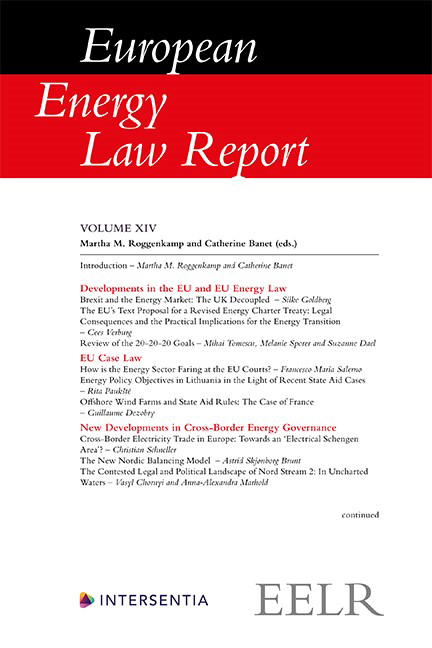Chapter II - The EU’s Text Proposal for a Revised Energy Charter Treaty: Legal Consequences and the Practical Implications for the Energy Transition
Published online by Cambridge University Press: 26 May 2022
Summary
INTRODUCTION
Since its entry into force in 1998, the Energy Charter Treaty (ECT) has become one of the most important legal instruments regarding the protection of crossborder energy investments in Europe and Central Asia. The treaty provides protection by prescribing the minimum standard of treatment that is to be accorded to investors and their investments falling within its scope. Moreover, through the Investor-State Dispute Settlement (ISDS) mechanism of art. 26, aggrieved investors can initiate inter alia international arbitration proceedings against a host State when they feel that their rights have been violated. As of March 2021, more than 130 arbitration cases had been initiated under the ECT concerning nearly all sub-sectors of the energy industry, making the ECT ‘the most frequently invoked international investment agreement’.
As will be elaborated below, certain characteristics of the treaty make it a potentially appealing treaty to investors. These characteristics include broad notions of ‘investor’ and ‘investment’ that define the scope of the treaty, a relatively favourable level of investment protection in comparison to other public law instruments, and the relative lack of noteworthy exceptions and/or derogations that are supposed to safeguard non-economic interests, such as the environment.
At present, the treaty applies indiscriminately to renewable and nonrenewable energy investments. This means, on the one hand, that the regime of investment protection applies to investments in Renewable Energy Sources (RES), which may stimulate the energy transition. On the other hand, as recently pointed out by various organizations, the ECT may potentially also obstruct the energy transition by providing protection to non-sustainable investments. That these potential benefits and downsides of the ECT in relation to the energy transition are not merely hypothetical is evidenced by practice. For instance, numerous investors that invested in RES have invoked the treaty’s protections when confronted with regulatory changes, while investors that made investments which may – increasingly – be considered ‘undesirable’ have also invoked the protections afforded by the treaty.
Amongst other reasons, the above factors have contributed to a desire – on the part of (at least some of) the Contracting Parties (CPs) of the ECT – to modernize the treaty.
- Type
- Chapter
- Information
- European Energy Law Report , pp. 31 - 54Publisher: IntersentiaPrint publication year: 2021



